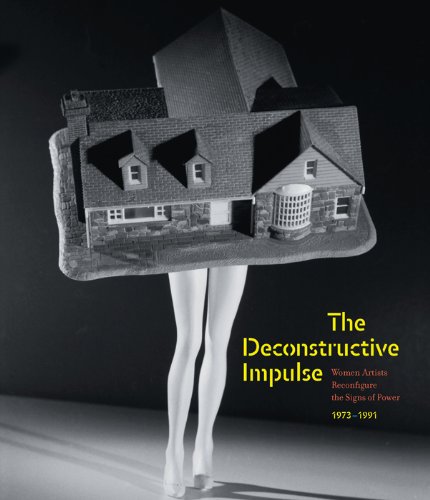آیا کتاب را خواندهاید؟
میخواهم بخوانم
در حال خواندن
خواندم
آیا کتاب را دوست داشتید؟
دوست داشتم
دوست نداشتم
The Deconstructive Impulse: Women Artists Reconfigure the Signs of Power, 1973-1991
امتیاز محصول:
(هنوز کسی امتیاز نداده است)
دسته بندی:
Design
ویژگیهای محصول:
کد کالا:
139583
شابک:
9783791351209
نویسنده:
انتشارات:
موضوع:
Design
سال انتشار:
2011
جلد:
Hardcover
تعداد صفحه:
176
طول:
27.9908
عرض:
23.3934
ارتفاع:
2.5908
وزن:
1238 گرم
قیمت محصول:
658,000 ریال
موجود نیست
درباره The Deconstructive Impulse: Women Artists Reconfigure the Signs of Power, 1973-1991:
This survey of leading women artists from the late twentieth century examines the crucial feminist contribution to the deconstructivist movement. The practice of deconstructivism, a term describing artwork that examines the imagery of the popular media, was significantly shaped by dozens of important female artists during a critical era in late twentieth-century visual culture. These artists subverted their source material, often by appropriating it, to expose the ways that commercial images express imbalances of power. The mechanisms of power in mainstream art institutions were also subject to these artists' critique. This exhibition catalogue features a diverse group of North American women whose transformative and often provocative work deals with gender, sexual, racial, ethnic, and class-based inequities. Among the artists included in the book are Dara Birnbaum, Sarah Charlesworth, The Guerrilla Girls, Susan Hiller, Jenny Holzer, Mary Kelly, Silvia Kolbowski, Barbara Kruger, Louise Lawler, Martha Rosler, Cindy Sherman, Laurie Simmons, Lorna Simpson, Carrie Mae Weems, and others. Essays by leading critics discuss such topics as the importance of critical theory and sexual politics in the art world of the 1980s; how domesticity is represented in commercial media and the art that addresses it; the importance of psychoanalytic theory as a critical framework; and the sexualization of inanimate objects.





